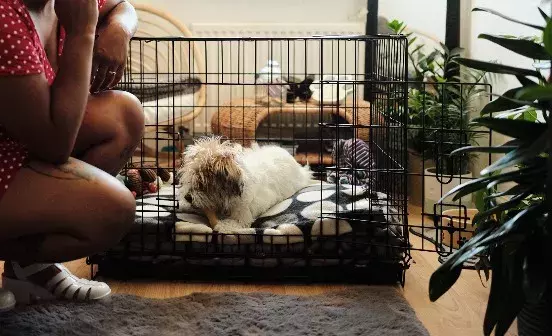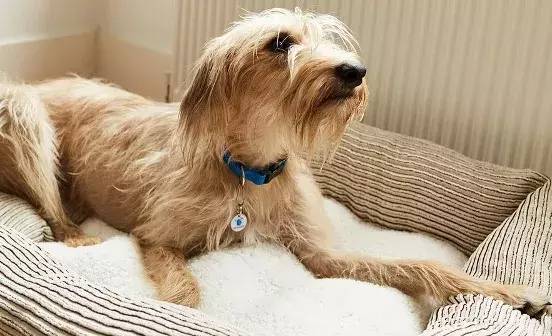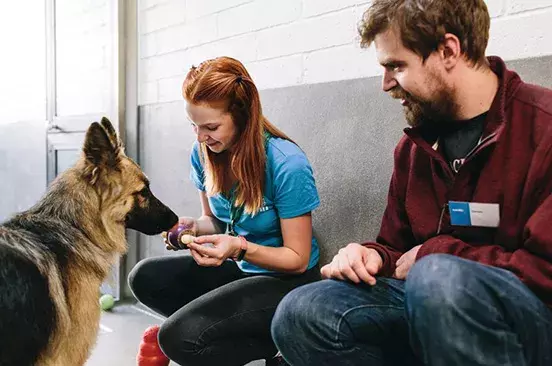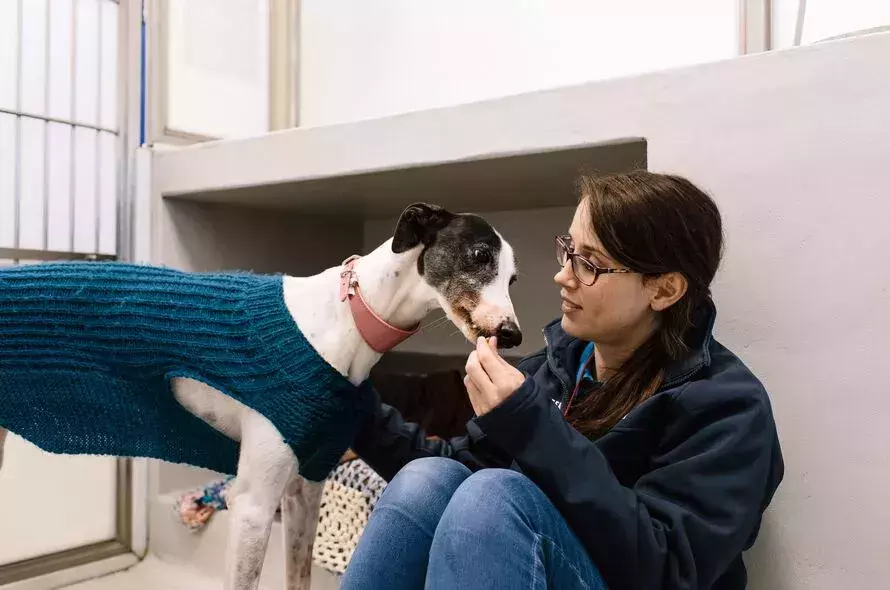While car travel is necessary for most dogs, many of them can find being in a moving car stressful.
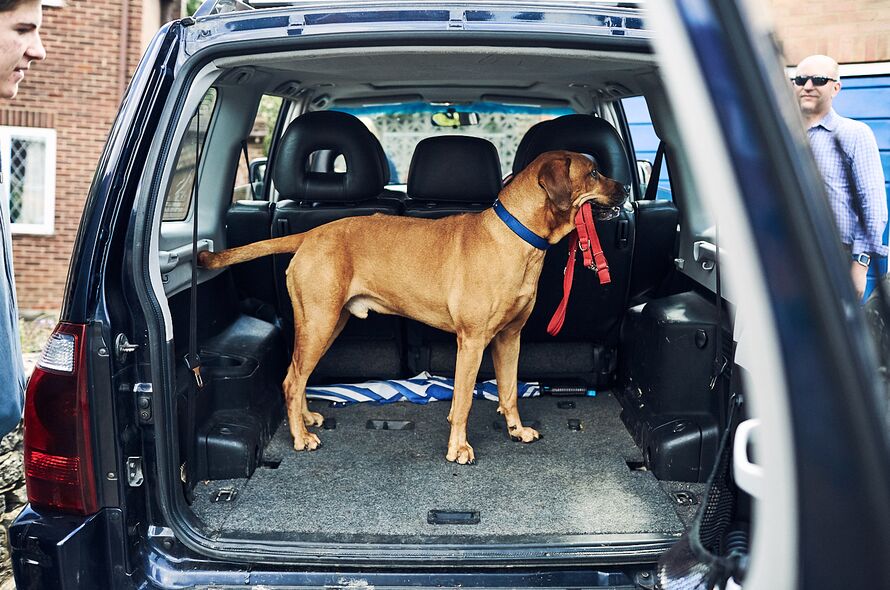
Your dog can show this in a number of ways, including barking, whining, heavy panting, vomiting or even refusing to get into the car in the first place. The way to overcome this is to help your dog create a positive association with the car. Remember that as well as being comfortable in the car, dogs must also be secured to prevent them from distracting the driver or posing any risks. Using a well-fitting car harness, a boot guard or a crate can help keep you and your dog safe while driving.
Take a look at our car travel advice video or read the steps below:
STEP ONE: CREATE A COMFORTABLE AND FAMILIAR ENVIRONMENT
If your dog is happy to get into the car, put a familiar dog bed and some of your dog’s blankets inside so they have a soft, comfy space they recognise. This familiarity can help them to feel more secure and the bed and blankets also reduce the likelihood of them losing their balance when the car is moving. If your dog is crate-trained, a secured crate can also be a safe and familiar space for them in the car when travelling.
STEP TWO: GET YOUR DOG USED TO THE CAR
If your dog is nervous around the car itself, then find some time when you don’t need to take them anywhere and get them used to being around the vehicle.
With the engine off and all the doors shut, walk your dog around the outside of the car at a distance they are comfortable with. Don’t try to force them closer to the car, instead allow them to make their own decision to investigate it when and if they feel comfortable. Reward them with a toy, a treat, or some praise any time they calmly look at the car or move toward it or sniff it.
Keep your sessions short initially, only doing a couple of laps around the car before taking a break. Continue these steps a few different times until your dog is comfortable walking near to the car. When your dog is completely comfortable and relaxed around the outside of the car, you can move on to the next step.
STEP THREE: INTRODUCE THE INSIDE OF THE CAR
This time, before you take your dog out to the car, open the door, or the boot, (wherever you eventually want them to feel comfortable) and put some of their blankets inside, keeping the engine off. Then it’s time to walk them around the car again and reward them whenever they move towards an open door or start to investigate.
Once your dog is relaxed around the open door, approach it and place a treat just inside, somewhere like the outer foothold, where the dog can still see it but doesn’t have to go into the car to get it. When your dog is comfortable taking treats from here, gradually move the treats further into the car until they are eventually having to climb in to get it. If they are hesitant and don’t want to, then go back a step and build back up. You can also try getting into the car yourself as your dog may feel more comfortable following you in.
Once your dog is happy to hop in and out of the car you can build up the amount of time they’re in there during your sessions. To do this, find some time to sit in the car with them and give them a long-lasting treat like a KONG or a chew. This will build a positive association with being inside the car as they get to enjoy a treat and spend time with you! When your dog is relaxed being inside the car, you can move on to the next step.
STEP FOUR: CLOSE THE DOOR
The next step is to try shutting the door while your dog’s inside the car. First, encourage them into the car, and give them a treat to settle them. Calmly close the car door and then open it again after a few seconds so they have the option to get out. If they’re already relaxed during this step, you can do this a few more times, leaving the doors shut for slightly longer each time. If they’re worried by the door being shut, repeat this step, but only shut the door partly to begin with. Gradually build up to shutting the door completely, making sure they always have a tasty treat to occupy themselves.
Once they are confident being in the car with the door shut, you can introduce the engine noise. With your dog inside the car, treat ready, and the door closed, have someone turn the engine on and keep it running for a few seconds. Turn it off, and let your dog out of the car. Repeat this step a few more times, making sure they still have something to occupy themselves, letting the engine run slightly longer each time. Keep an eye out for excessive panting, barking, or other signs of stress, and only keep practicing if your dog is completely happy.
STEP FIVE: TRY DRIVING
Once your dog is familiar with the sound of the engine and isn’t stressed by it you can begin to go for short drives. Keep the drives very short initially, we would recommend going down the street and back again, and make sure that it is a slow and smooth journey. Start with lots of shorter journeys before gradually increasing the distances you travel. When you are able to build up the length of the journeys, as much as possible make sure your first real trips are to take your dog to places for nice walks and fun activities nearby. This will build the positive association that most of the time getting in the car means going to fun places
Download this guidance as a handy advice sheet and use it to train regularly:
